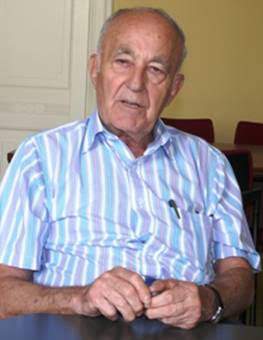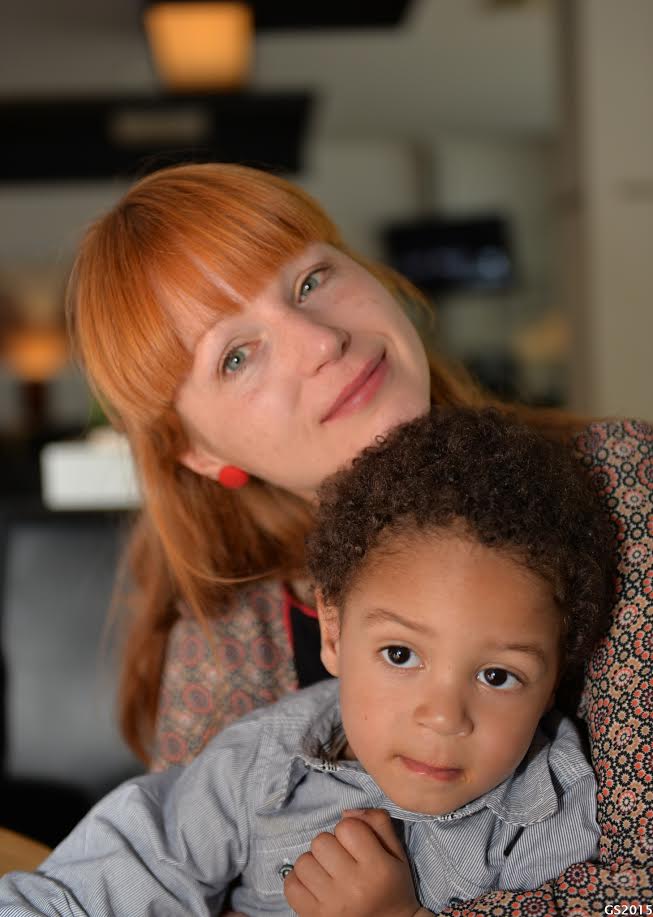
THE VOICE OF INTERNATIONAL LITHUANIA
|
VilNews has its own Google archive! Type a word in the above search box to find any article.
You can also follow us on Facebook. We have two different pages. Click to open and join.
|
Author Archive

Text: Neringa Rastenytė-NEWSEC
The Baltic countries seem to start recovering from a deep recession. All in all, the region’s competiveness is improving and, as the internal imbalances are solved, the region is expected to continue its progress on the economic ladder, followed by recovery in real estate market. Since the beginning of 2010 the Baltic countries have been trying to reach the bottom and is still unsure what the frail surface under the feet really means. Notwithstanding this, it is rather clear, that further fluctuations should be very minor and the major shocks are left behind. In any case, lets hope that global economy will not suffer the “W” scenario, which could be extremely harmful for such fragile economies as the Baltic States. So, what challenges and opportunities will Lithuania face in 2011? Is the current foundation strong enough to restart at a full pace?
Real estate market in Lithuania – how reasonable is the latest optimism?
Hundreds of thousands of square meters have been cancelled or frozen in 2009; the renewal of development projects does not seem to be started in next few years. The planned new development volumes for 2011 are modest and the few projects that will actually come on to the market are generally completions of previous years’ projects or extensions of existing ones. It is hardly possible, that developers will start developing without any pre-leases and banks will be extremely selective in financing new projects for at least next 2 years.
Retail turnovers have stabilized in the beginning of Q2, 2010 and some retailers start monitoring minor growth on a monthly basis. Local indexes of consumer confidence have started to improve half a year ago and keep growing in all three Baltic countries. Massive rent-price renegotiations have led to temporary rent discounts of around 30-35% and have changed rent payment structures. Turnover rent structures are now gaining ground in the Baltic region. Most of existing occupiers are not asking to increase existing rental discounts, which mainly are provided by the end of the year, however expect them to be prolonged for another 6 to 12 months. In 2011, owners of the most successful commercial properties, are going to start removing discounts step by step.
Occupational markets are still vulnerable; however it seems that vacancies in office markets are melting faster than expected. Vacancies in the field of prime offices have decreased substantially since the end of 2009. The main reason - low overall supply (Baltic capitals are still one of the least developed cities in the field of modern offices in all Europe), meaning that every single deal makes strong impact on vacancy rates. For example, there was 25-30% vacancy in Vilnius office market in the beginning of 2010. Impressive? Yes, if you look at percentage rates; no, if you look at number of vacant square meters. There is only ~400 thous. sq.m of modern office space in Vilnius (one of the lowest ratio per capita in Europe). Couple of deals in 2010 has affected vacancy rates significantly, which is just ~10% or 40 thous. sq.m today. In other words, the company seeking to lease office immediately would have no choice in existing A grade buildings. Moreover, most of large lease agreements have been concluded in 2007-2008 for mainly 3-5 years. Some of these occupiers will definitely consider moving into a newer office, thus local developers have solid platform to start pre-agreeing new lease agreements and plan new office developments.


Source: Newsec Baltics
Residential market seems to be the most affected; however more and more developers start new constructions. Most of unsold stock is of rather poor quality and is now in the process of being taken over by banks. After a rapid decline in 2008/2009 (~40% in Lithuania, ~50% in Estonia, ~65% in Latvia), prices have stopped dropping in the end of last year in Latvia and Estonia and in the end of Q1 in Lithuania. Most of transactions are concluded in the field of old soviet type apartments, where transaction value does not exceed 40-70 thous. euros per single unit.

Source: Newsec Baltics
- Bookmark :
- Digg
- del.icio.us
- Stumbleupon
- Redit it
Sleeping Beauty about to Wake up
- Posted by - (0) Comment
Luxury Residential Property Market in Lithuania

Text: Neringa Rastenytė-NEWSEC
Throughout the last decade residential property market has experienced one of the largest booms as well as one of the hardest falls among other property markets in Lithuania. Influenced by a strong growth of the economy and even stronger future growth forecasts, fueled by loosely controlled bank credit market and inexpensive lending as well as high future income expectations, the residential property market suffered from quick yet low-quality supply of new residential projects, bankruptcies of many of property developers and failures of many of the inhabitants who took mortgages, to repay or keep with the payment schedule.
However, many of the abovementioned issues, which strongly influenced the economy-class and medium class residential property markets, were not so in line with the developments in the luxury property markets in Lithuania.
Luxury Property Market
The luxury property market usually starts with around EUR 2300-2500 /m2 of residential property, and thus is only available to the most affluent part of the Lithuanian population. The properties considered as luxury are also highly sensitive to the nearest neighborhood, safety of the location, surrounding conveniences, such as convenient underground parking, quiet, clean neighborhood and respectable neighbors. A beautiful view from windows, high standards of architectural (and sometimes interior design) solutions, park/greenery close by are considered a must for a luxury properties as well.
A typical customer is usually 30 -50 years old, well (and usually abroad) educated, is married and has children. He or she is either a highly valued professional/manager or successfully manages own business, travels a lot and has business activities or worked abroad as well. In addition, market participants do not tend to take speedy decisions but rather analyze all offers available first. Speculative behavior is rarely observed in the market due to significantly higher transaction amounts than in the economy class or medium class residential properties. Furthermore, luxury properties are usually bought not as the first home, but as an improvement or extension to already owned properties, focusing on long term value of the property.
Market Hibernation
Due to a limited supply and the uniqueness of the objects as well as the selectiveness of the potential buyers, the luxury property market is much slower to react to the general residential market trends. Perhaps, the distinguishing feature of the luxury property market is the ability of the buyers and the sellers to wait, as usually it is not the first apartment or house of the purchaser and considerable resources are available already without external financing. Thus, the owners of the properties, unless distressed, do not tend to sell their properties “cheaply”.
Thus in 2009 the market entered into a phase of hibernation, where both the potential buyers and potential sellers were just viewing the properties and actual transactions were rarely concluded. If compared with 2008, the number of transaction in the luxury property market decreased by approximately a third, whereas it is very difficult to assess the changes in the price levels, as these were set on case-by-case basis. However, it can be noted that the most sensitive to price changes were properties, where despite seller claims of being a luxury property, there were considerable drawbacks (bad neighborhood, inconvenient location, parking or access to the property, bad quality of construction, speculative new projects of questionable value), where prices in many cases dropped down by around 30-40% to the levels of upper-class residential property prices, whereas the most prestigious luxury properties dropped by up to 20%, yet in many cases were not sold at all.
Scarce bank financing for mortgages was not considered as issue, whereas the need to finance own business needs was much more of a problem prevailing in the luxury property market in 2009.
In 2010, especially the second half of the year, market activity showed the first signs of improvement, with more frequent successful transaction conclusions. The price level, if compared to 2009, remained at a similar level. In both 2009 and 2010 there were some examples in the market of luxury properties sold at prices above EUR 4000 /m2 in Vilnius.
Location Puzzle
Whereas the price levels and the number of transactions varied in 2009-2010, top luxury locations in Vilnius remained the same. In Vilnius, Rotuse square, Didzioji and Pilies streets with select surrounding areas carried the top price tags, and together with Gaono, Stikliu, Saviciaus streets as well as some select spots in the old town area, such as “Mikalojaus ziedas” in Zemaitijos street, formed a luxury residential neighborhood.
Latviu and Ciurlionio streets as well as some residential individual-house neighborhoods, e.g. Valakampiai, are considered as luxury top spots as well, though not located directly in the city center or the old town.
Luxury Rent Market – an Unexpected Winner
Potential buyers, who were not able to find or purchase the desired properties, rented luxury properties, which became a more common trend in 2009-2010. This solution came handy to “check” the surrounding neighborhood as well. This behavior was atypical to the luxury property owners three or four years ago in Lithuania and was helped by the market rent level, which, in contrast to the sales prices, became approximately 40% lower if compared to the levels observed in 2007, thus more attractive to the market participants.
Sleeping Beauty is waking up The luxury property market, though having experienced a slowdown in the level of transactions in 2009-2010, is reacting very differently to the crisis, if compared with the general residential market. The past two years in many ways were the opposite, 2009 being full of uncertainty, cautious behavior and modest spending, whereas in 2010 the perceived stability in business and economic environment in Lithuania has brought the luxury property market up on feet, with buyers more willing to buy and sellers more willing to sell. The level of transactions is thus expected to improve in 2011, whereas the price level will most likely fluctuate around the same level.
Nevertheless, we should see more of rent transactions in the luxury property market as well. Typical owners perceive luxury properties more as an investment, thus an option to “check-out” the property before buying something in a similar location is attractive.
- Bookmark :
- Digg
- del.icio.us
- Stumbleupon
- Redit it
Interiors, interiors, interiors…
- Posted by - (2) Comment
What is up now 2011? TIPS from the Maison & Objet – interior exhibition in Paris

Text: Riina Ailio
Today, in 2011, we are living in accordance with the sprit of the Rabbit Year! This year is lovely, absolutely lovely. You can feel the difference after the stormy Tiger Year, which was last year.

TIME TO RELAX, enjoy life and collect power. Take your e-book and do not feel quilt of lying on your brand new DAYBED. It is like a sofa, but sitting place extends to lying position. Total relax.

During the Rabbit Year you can dive to the history by the stories from the VINTAGE CARPET. Yes, it is true, what you see, this carpet is a mix and match of the master pieces of the real Persian carpets. Let’s share the story!
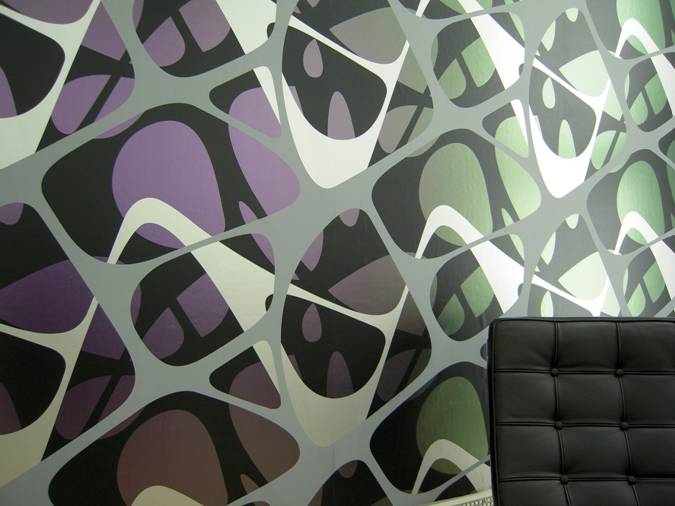
An inspirational Zaha Hadid wall covering.
Zaha Hadid, one of the biggest name in architectural and design world, has created some amazing wall patterns, changing colours like our rabbit is changing his fur colour. “Chameleon’- is the word for this year.
These are some tips for your home in 2011. And more you can get by inviting the INTERIOR SPECIALIST to your home to see what you don’t see.
An outsider can open your eyes. Your surroundings are the continuation of your own ego. Let’s find the effect together – the effect that you need to feel stronger inside you.
Your interior can courage you, it can make you relax, it can inspire you….it can do what ever you need, just notice it.
I, as an interior specialist and interior therapist have been visiting thousands of homes. And I believe I can read YOU by seeing your home. Maybe I even have something important to tell you. Let me know if you want to know. It is fun!!
- Bookmark :
- Digg
- del.icio.us
- Stumbleupon
- Redit it
Many reforms are needed in Lithuanian higher education. Changes in the elementary and secondary levels are not considered here. By and large, these sectors, though delinquent in teachers’ salaries and school infrastructure, do prepare students reasonably well for their futures with rigorous and disciplined instruction. The need for change is noted by visiting volunteer groups from the U. S. and Canada, working with Lithuania’s teachers on continuing education programs. Students who complete the elementary and secondary levels do well when studying abroad, but are short changed in their higher education. We propose urgent reforms and major changes to this postsecondary level. Reforms in higher education must give serious priority to four areas: adequate financial resources; curricular changes to create a better system for imparting knowledge; outreach, wider service areas and new learning centres; and productivity and excellence in creating and imparting new knowledge in school and on the job
Text: Olga Medvedeva
To write about the higher education reform in Lithuania… - why me?!
That was my first reaction to the request to look into how the higher education (HE) reform is going on and to write about it.
I have always tried to avoid giving opinion about something I don’t think I know well enough. Indeed, there are people who study all the figures and ratios about HE: numbers of students by age, by type of studies, by future qualification, the labour market supply & demand, investment and outcome (in whatever units of measurement), trends in demography and vectors of migration, intra- and extra- factors etc. They diagnose the state of things and recommend what is to be reformed, transformed or introduced…
On the second thought, isn’t education one of the areas we are all involved in? First as students, then as parents, then just as common people who do care what specialists treat them in hospitals, design houses, set prices or calculate taxes? And as citizens, who are concerned about lots of university graduates leaving Lithuania in search of a job elsewhere…
A few facts about the HE reform in Lithuania:
Lithuania has switched over to the European model of higher education that makes a clear distinction between university and non-university studies; it is divided into undergraduate, graduate and post graduate studies. The common time- and workload framework allows for a bigger mobility of students and comparability of degrees. At present there are 21 universities (state and private) and 27 colleges in Lithuania; the country is well above the EU average by the proportion of students per 1000 to the total population aged 20-29 ( LT- 73.21; EU-52,8). The changes in the legal status and governance of universities have granted rights to engage in business activities: purchase and sell property, set up companies, get loans. The most disputable innovations of the reform are changes in financing: the notorious “student basket”, which includes teachers’ salaries, costs of study materials and scholarships, has caused a real commotion in universities’ hunt for potential students with their full baskets. The more students are admitted, the more finance a university or college gets…
No reform would be true to its name if it were not challenged and questioned at each step. Almost 50 HE institutions in Lithuania - is it just enough or too many? In 2009-2010 45,6 % of the emigrants from Lithuania were of the age of 20-39, how many of them carried away their university diplomas and educated brains?
Tertiary education “…equally accessible to all, on the basis of capacity,…” –shouldn’t there be more weight given to measuring or assessing capacity? Otherwise, we face an eternal clash between quantity and quality. With no intent to hurt anyone’s feeling, let me remind you Ezra Pound’s words about education:
“Real education must ultimately be limited to men who insist on knowing–the rest is mere sheep-herding”.
When going to universities in other countries rather than in Lithuania, most young people justify their choice by the reasonable prices for a better quality there… Quality is a complex concept; it is probably more complicated to define and assess “quality” in education than in the production of tangible things. But one cannot start wondering about quality when you see that financing per student in Lithuania is approximately 2 times less than the EU average, not to speak about Sweden, Finland or Denmark. And why do many university lecturers feel awkward when their peers from Belgium or Ireland talk about salaries? Is it because they are paid adequately for their lower-quality work?
My reflections on the changes in HE in Lithuania are fragmentary and subjective. Though formally “a teacher “, I believe in Shaw’s interpretation of teaching: “I am ….only a fellow traveler of whom you asked the way. I pointed ahead – ahead of myself as well as of you”.
- Bookmark :
- Digg
- del.icio.us
- Stumbleupon
- Redit it
We do not have long to get a school system right
- Posted by - (2) Comment
Text: Mervyn Bedford

Mervyn Bedford at one of the many Oxford landmarks of higher education.
Because I know Aage Myhre and his wife and very much respect what he is trying to do for Lithuania, I offered to write of educational values for the new version of VilNews. The Baltic nations have a perfect opportunity to change the map of educational provision in ways that better fit the rapidly changing world of the 21st. century. Education is not about buildings. It is not about systems and organisations. It is not about tests and inspections. It is about people and the relationships between those who want to learn, or need to learn, and those who already know it. For almost 150 years State school systems have imposed a model of teaching and learning that has hardly changed while society has fundamentally changed and, recently, very rapidly. Those changes are racing unseen towards our youngest children.
At a conference in Norway in 2009, reported in the respected UK magazine “New Scientist,” experts discussed how soon human beings will need to be wired to the super computers rapidly arriving in the work place. Earliest suggested date was 2045. At MIT in the US by 2029 they will have computers able to replicate human thought and decision by copying the chemical and electrical patterns in the human brain. Two Oxford University teachers have argued in print about whether it is right to allow students drugs to enhance their brain performance. Drugs to provide specific hours of sleep and brain implants that help deaf children to hear and paralysed limbs to move already exist. Job requirements in a very few years time and the character of society will change dramatically. We do not have long to get a school system right.
1 An Ideal School System
The Early Brain
School systems have been rooted in teaching mainly facts which pupils and students have only to remember and write down on test papers. Testing systems of all kinds, including the university sector, are seriously flawed. Research shows that at best they test speed if handwriting and memory. These are not the most desirable qualifications for employment. Business people in England and some academics openly complain that despite escalating results at 18+ we are still not producing enough people who can think for themselves. That is why future human beings, including my four young grandchildren, may have to be electronically plugged into the machines.
Modern scanning reveals that the human brain, even before birth, is imprinted for learning. The two senses- touch and hearing- are alive and working from the first day. "Feed them now" nature is crying, but how little we do to work them effectively. A baby's early experience is a total lottery. There is abundant evidence that the brain has enormous reserve power that even the Einsteins and Hawkings do not tap. School systems threaten the human brain with redundancy.
Early encouragement of free, natural learning experience in babies is now essential. The priority for national investment must now be early education. The obvious risks can be managed effectively. We have to build raw brain power in those early years, up to three and four, when the brain is plastic enough to believe anything is possible. That is the power needed to stay ahead of the machines. What we have built by around 4 and 5 will continue to mature and learn but we cannot much increase its raw power. If we do what is right for our youngest children we shall solve all the problems most countries observe with later education, including many costly efforts to repair the dame of educational failure.
Parent-Teacher Partnership
Research clearly shows the power for young children’s learning when teachers and parents are on the same wavelength. This is best found in smaller schools. Across the UK and elsewhere standards in small schools are at the top of national performance despite all the alleged “problems” argued for closing them. No educational evidence is ever offered to support closures. They are said to be too expensive but this is a badly flawed argument. When total education spending is calculated small schools generally cost less. It is not fair only to calculate their pupil unit costs. Small schools serve mainly rural areas and bring rural community benefit, but our urban children and their communities urgently need the same benefits. The “big is better and by the way cheaper” myth has never been right. Long-term, small-scale education delivers profit on its costs. Academic achievements are more widely achieved and are more enduring. This brings better qualifications and jobs and eventually higher tax revenues for the State while the healthy partnership between home and school reduces the heavy costs of later educational failure. A wise government will invest in small-scale provision and partnership between teachers and parents.
Effective Teaching and Learning
Research has consistently shown that up to 50% of all outcomes still reflect home background- for better or worse. The other 50% is quality of teaching. This will also reflect quality of headteachers and school leadership.
There is much profoundly valid research showing basic factors which, if present in lessons, make them effective. This important professional research never reaches classrooms while the government systems shaping what schools do and what universities demand distract their interest. The desired models, however, require the opposite of what most school systems offer..….not least the way time is used. I worry about under-privileged and disadvantaged children, an often failing cadre of disaffected pupils, but I worry more for those who think they have succeeded. A wise government will invest heavily in giving teachers the tools they need to do the job. Teaching is not mysterious but it is more complex than even many professionals believe.
For example the most effective learning comes when teachers in their planning exploit what their pupils already know and can do. As a result they often ask them to make important decisions about their work and take responsibility for much of it. Real-world experience like discussion and co-operation play their part. Teaching becomes a sensitive matter of fine-tuning the whole programme, leading when required and at other times supporting the learning. Teachers must always show they are in charge and know the goals. They need to demonstrate they not only have the tools but know how and when and where to use them. Successful schools have leaders who inspire such professional insight and vision and lead the practice by their own example. Their schools are places where flexibility and spontaneity feature significantly in everyday organisation.
Effective Accountability
The observation model I developed in Sweden is similar to the one recently adopted in New Zealand to replace tests and inspections. If we inform teachers better and help them to inform each other by observing in classrooms, where the real action is, we shall change and improve practice in some cases overnight. Observation is such a revelatory practice. Its truths often have meaning for more than the teachers, but for the school and even the State. To invest in such a system needs only an independent, external validation system- checking that schools use it, and are learning from it. It will be much cheaper than tests and inspections.
If Lithuania adopted these principles and priorities it will achieve the paradigm shift in educational practice the 21st. century urgently requires. Heavy, top-down, bureaucratic and expensive procedures will be minimised. In England we are wasting billions of pounds on smart new buildings despite two major pieces of respected academic research showing that long-term the quality of school and college buildings impacts little on performance. We want clean schools, in good repair, with adequate working space, ventilation and sound-proofing. We do not need architectural palaces. No-one can tell me exactly what education will look in even ten years time, let alone 2099. It will be very much at a button and the two resources our children will still most need will be good parents and good teachers. Those are the targets for investment. Let Lithuania lead the world.
Mervyn Bedford
Mervyn Benford is a former teacher, head teacher, local authority inspector and adviser who later worked for eight years as a national school inspector in England and Wales. The school he led won recognition under the 1986 Royal Society of Arts “Education for Capability” award. He has throughout his career contributed media articles and interviews on education and more recently worked on and off in Sweden for 14 years training teachers to observe lessons and give friendly but constructive feedback as a better method of accountability than testing and inspection. He observed over 2600 lessons in Sweden across the age group from 1 to 20. He works voluntarily for an organisation designed to promote the virtues of smaller schools. He has a deep interest in the independent Baltic States and in 2009 talked at an international seminar in Riga on school quality issues. In England, as a member of the National Education Trust, he is regarded as one of its “Leading Thinkers
- Bookmark :
- Digg
- del.icio.us
- Stumbleupon
- Redit it
The French daily “Le Monde” has recently published an article about Lithuania’s world-leading laser manufacturers. According to “Le Monde”, Lithuania is the biggest exporter of femtosecond lasers in the world. The Lithuanian laser technologies producer UAB “Šviesos konversija” only holds 80% of the global market of femtosecond lasers. A country of 3.5 million people, Lithuania, has about 15 laser producers, employing about 300 laser specialists, half of which are engineers and doctors of sciences. Lithuania’s laser sector grows about 15-20 % annually, which is twice faster than the whole economy of the country. The Lithuanian laser production is demanded by the best scientific laboratories in Europe and the US.
Read more...- Bookmark :
- Digg
- del.icio.us
- Stumbleupon
- Redit it
- Posted by - (0) Comment
VilNews section TRAVEL LITHUANIA!

This is our ultimate tourism guide that supports promotion of Lithuania and all that this country has to offer. Articles on a variety of topics, information about hotels, airlines, resorts, historic sites, events, museums, attractions and much more can be easily found here!
The main activities of the TRAVEL LITHUANIA Tourism section are the following:
Spreading knowledge about tourism services and destinations in Lithuania.
Informing about tourism investment opportunities Lithuania.
Fostering tourism relations with other countries.
Informing about tourism exhibits and fairs.
Fostering foreign media coverage of tourism in Lithuania.
Informing about workshops and meetings, conferences, seminars for professionals.
Planning to visit Lithuania? Here is some information for You:
Visa
Overseas residents must present valid documents on entering Lithuania; these include a passport and an entry visa. No visa is required for residents of the United States, Britain, the EU and residents of many other countries who enter Lithuania for less than 90 days in a 12-month period.
There are arrangements with some 20 other countries, whose citizens are eligible to receive a visa to Lithuania without being in possession of an invitation from a Lithuanian body. Nevertheless, the visa is granted after proof is provided of the ability to finance the period of the stay in Lithuania; normally around 40 dollars a day is required.
For more about visa and Residence Permits see: http://www.urm.lt
How do I get to Lithuania?
It’s very easy to reach Lithuania by car, ferry, railroad or by air. There are three international airports, all with good connections to Europe. The airports are located in Palanga, Kaunas and Vilnius.
A list of flights to Lithuania from popular destinations can be found here: flights
What language is spoken in Lithuania?
The official language in the country is Lithuanian which is said to be the most archaic of all the living Indo-European tongues. In tourist places and in bigger cities most people know English. Other languages that it may be possible to communicate in Lithuania are Russian, Polish; sometimes French, German.
Got interested and want to learn some Lithuanian? See: http://www.oneness.vu.lt/lt/
What currency is used in Lithuania?
Legislation on the controls of cash entering or leaving the EU apply in all Member States. Any person entering or leaving the EU will have to declare the money that they are carrying if this amounts to 10,000 euro or more (including cheques, travellers' cheques, money orders, etc.). This will not apply to anyone travelling via the EU to a non-EU country, as long as the original journey started outside of the EU, nor to those travelling within the EU.
The official currency of Lithuania is Litas (Lt). Major credit cards are widely accepted and ATM machines can be found in most banks and hotels. There are numerous currency exchange kiosks in the capital Vilnius and travellers' cheques can be cashed at some banks.
For more see: currency
What precautions should I take against muggers and robbers?
Petty crime, notably pickpocketing in bars and restaurants and especially in outside areas, is common. Take extra care of your belongings in busy, and particularly in outside, locations. Avoid carrying large quantities of cash. When confronted by a mugger or robber do not oppose resistance.
If you need to contact the emergency services in Lithuania call 112
- Bookmark :
- Digg
- del.icio.us
- Stumbleupon
- Redit it
Text: Audrius Simaitis
My efforts to change the outlook of the Lithuanian health system started in January 2009 when I created the very first plan for how to bring about the change, long before the Ministry of Health started the current reform for this sector. Mr. Žilvinas Beliauskas was a wonderful partner in this enormous effort at that time but government institutions paid little attention, if any.
When in autumn of 2009 the Ministry of Health started the current reform it was obvious that the suggested changes, although important, will not bring a long term ongoing success as much deeper changes tackling the main underlying issues were required.
I have created a concept that is called "Health Care Reform Based on Values". The main idea of this concept is to create 3 medical regions in Lithuania with university centres as the main coordinating institutions in each of the region. Vilnius and Kaunas already have such an institution and Klaipeda does not.
One of the obvious problems that are the main source of underlying current problems, such as corruption, is the fact that the directors of the hospitals have too much power. Indeed their powers could be compared to the Kings of the middle ages. There is no control and accountability for their actions, as many Boards in the hospitals do not have any decision making powers. To compound the issue, six years ago Parliament issued a law that the there is no retirement age limit for the heads of the hospitals. They are the only category in the country to have such indulgence.
These are just a few examples to illustrate the fact that there is too much power concentration in one hand. This led to the situation where doctors and nurses are very passive and over the years they never learned to express their concerns or opinions publicly purely due to the fear. The fact that doctors accept unofficial payments also contributes significantly to the stagnation in the system.
Therefore we need to create an institution that will tackle these issues and will release the potential currently suppressed by existing structures and fears.
This leads to the next idea described in the "Health Care Reform based on Values". Each of the 3 regions should be governed by the elected/appointed Boards that would consist of the doctors, nurses, directors of the hospitals, representatives of the public and representatives of the patients' organizations. In this way the balance of the power between the directors of the hospitals and doctors will be achieved. The Regional Board will be responsible for the strategic decisions and the hospitals will be responsible for the implementation of these decisions.
And the integral part of this concept is the New Physician's contract that would encompass all the modern aspect of the physicians’ role in today's society. The concept also foresees significant change in the role of nurses as the current role of the nurses in Lithuania is well beyond the times.
Since autumn 2009 I have made multiple presentations of "Health Care Reform based on Values" to hospitals, various organizations, including presentations to the Speaker of the Parliament Mrs. Irena Degutiene, to the Health Care Minister Mr. Algis Caplikas, to the health care team of the President Dalia Grybauskaite. Various national mass media outlets published a lot of my articles reflecting these ideas.
In the continuation of these efforts to bring about the change, I organized a Western Lithuanian group of doctors and patients. This group in collaboration with Klaipeda University organized a Conference on the 15th of January 2010. About one hundred representatives of the doctors, patients' organizations and nurses in Western Lithuania took part in this Conference. The Resolution of this Conference fully supported the idea of establishing Klaipeda’s University Hospital with the idea to create the Association of all three Hospitals in Klaipeda as an initial step. The Resolution also supported the idea of establishing a Board of the Association with the thought to bring about balance between the administrators of the Hospitals. This also would enable the implementation of modern methods of health care management.
Basically there was no reaction from the government institutions to this Conference, and there two main reasons for that. Firstly, Vilnius and Kaunas University Hospitals do not want to loose their dominating status, as this obviously is associated with the finances. They have a lot of power and influence on the Ministry of Health to a degree that some of the prominent figures state that health care in Lithuania is governed by them and not by the Minister. Secondly, is the very important reason that most of the directors of the hospitals in Klaipeda do not want to have the University Centre as their own role could be different after the Klaipeda’s University Hospital is established.
This was very well demonstrated during the latest debate /forum which was initiated by the Mayor of Klaipeda and myself on the 26th November 2010. Only one Director of Klaipeda's three major Hospitals was present during this debate. This debate was about the future of the Klaipeda’s Hospitals and the unanimous decision of the forum was that there is the obvious need to establish Klaipeda’s' University Hospital. A representative of the Ministry of Health, Mr. Martynas Marcinkevicius who gave a presentation during this event supported this idea. There have been no developments since then.
The “fight” continues.
- Bookmark :
- Digg
- del.icio.us
- Stumbleupon
- Redit it
Text: Gene Emmer
(from his travel blog www.lithuania-travel.net)
Unfortunately, Vilnius Lithuania does not rank high on any list of wheelchair accessible cities. We rarely see any wheelchair users in the city. When we do, they are invariably manual wheelchairs. We have yet to see a power wheelchair or a mobility scooter in Vilnius.
Several problems plague Vilnius in terms of accessibility. While it is not difficult to find accessible accommodation in Vilnius, it is difficult to get around. Like many European old towns, the streets are cobblestone. Old town shops usually have steps, and rarely have ramps or lifts. Restaurant toilets will sometimes be a flight up or down, with no alternative access. There is little in the way of disabled parking. The good news is that the Vilnius old town is pedestrian friendly. So, with some patience and a bit of assistance, a manual wheelchair user will manage in most places.
In the newer part of the city, such as shops and restaurants located on Gedimino Prospektas, things are a bit better. For example, the shopping mall located on Gedimino 9 is wheelchair accessible. Some of the newer mega shopping centres, such as Akropolis, Ozas, Panorama will offer few problems for wheelchair users. However, the vast majority of the buildings in Vilnius were built without elevators or ramps and there has been little in the way of retrofitting to accommodate people with disabilities.
Services for wheelchair users are also limited. It will be difficult to locate wheelchair accessible vehicle rental or wheelchair rental in Vilnius. While the Vilnius Airport will present few problems to a wheelchair user, access to the train station will be quite difficult. There is ramp access at the train station to one of the doors at the train station. However, getting onto the trains is challenging as there are no ramps to the train platforms and getting onto the train usually requires a very steep climb up steps built into the train cars.
While Vilnius is a beautiful city and certainly one to be enjoyed by everyone, a trip to Vilnius, Lithuania will present challenges to many wheelchair users. With adequate planning, many of the challenges can be overcome. But wheelchair accessibility of Vilnius, Lithuania leaves much to be desired.
- Bookmark :
- Digg
- del.icio.us
- Stumbleupon
- Redit it
The best doctor in Vilnius?
- Posted by - (2) Comment

Having worked in the Pharmaceutical industry for over 15 years, I have seen and gotten to know more doctors than most. I know that there are many doctors who are good at treating the disease but not so good at treating the patient. There are other doctors who are very good with patients, but are sometimes lacking in their medical skills. To find a doctor who is good at both is unfortuately rare.
I have a found a doctor who is not only good at both, he is perhaps the best doctor I have ever met. His name is Dr Cervin.
It is not just me. I have mentioned Dr Cervin to my friends and I know that some are seeing him. Most express their gratitude for the referal. This guy is that good.
Dr. Cervin studied medicine is Australia. His passport maybe Lithuanian, but his medical approach is very much western. He is that GP who you just feel confident in and comfortable with. He offers old-fashioned patient care with modern medical treatment. The ideal mix that you rarely find anymore. Needless to say his English is perfect Australian English.
Dr. Cervin's assistant is pure Lithuanian. She is very kind but her English is limited. So, if you call and speak English, she will probably connect you through to Dr. Cervin directly.
The other nice thing about Dr. Cervin is his location near the Cathedral Square. For many expats and visitors to Vilnius, this is very convenient.
All this comes at a reasonable price. At the moment the cost of a consulation is about 150 lta (approx. euro 50) plus the cost of any exams or proceedures. However, Dr. Cervin always consults with his patient before ordering any of these. So, you will not be suprised by the bill.
So if you are looking for the best GP in Vilnius, call up Dr Cervin and say G'day.
Text: Gene Emmer
(from his travel blog www.lithuania-travel.net)
- Bookmark :
- Digg
- del.icio.us
- Stumbleupon
- Redit it
VilNews e-magazine is published in Vilnius, Lithuania. Editor-in-Chief: Mr. Aage Myhre. Inquires to the editors: editor@VilNews.com.
Code of Ethics: See Section 2 – about VilNews. VilNews is not responsible for content on external links/web pages.
HOW TO ADVERTISE IN VILNEWS.
All content is copyrighted © 2011. UAB ‘VilNews’.

 Click on the buttons to open and read each of VilNews' 18 sub-sections
Click on the buttons to open and read each of VilNews' 18 sub-sections 

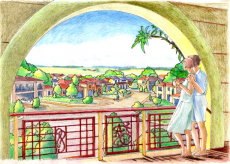






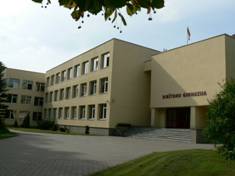

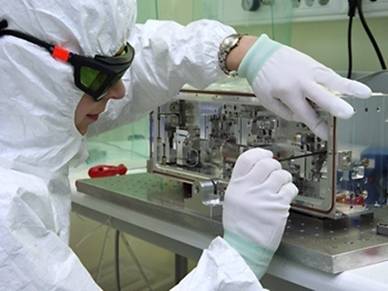
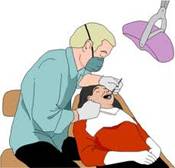
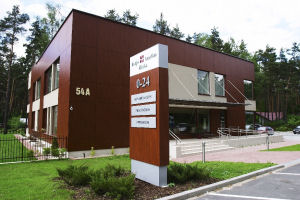
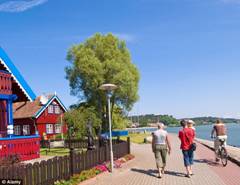
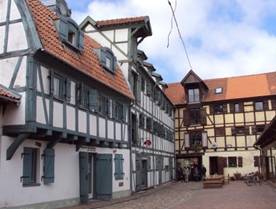

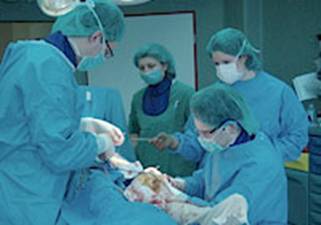
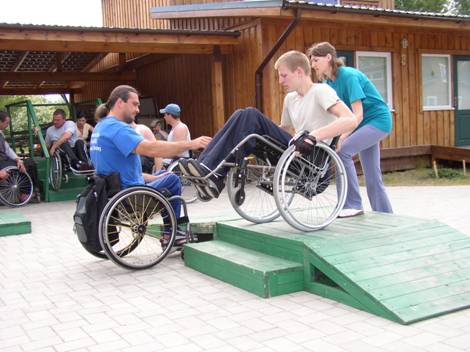
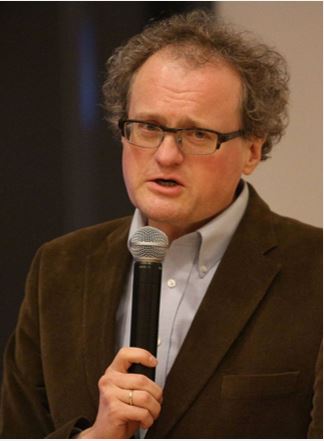
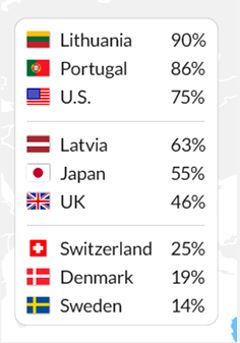
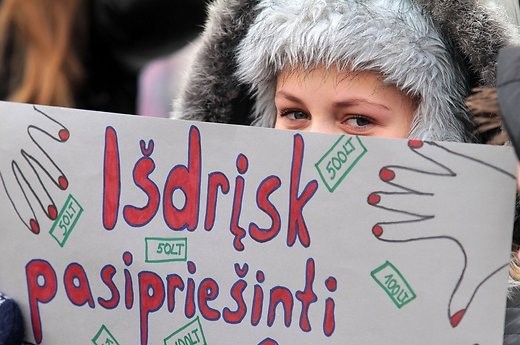


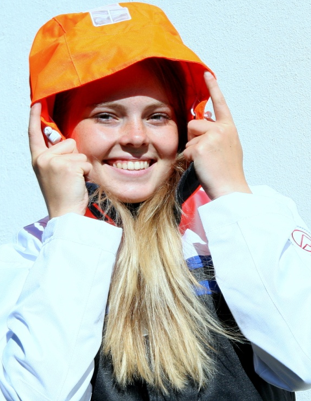
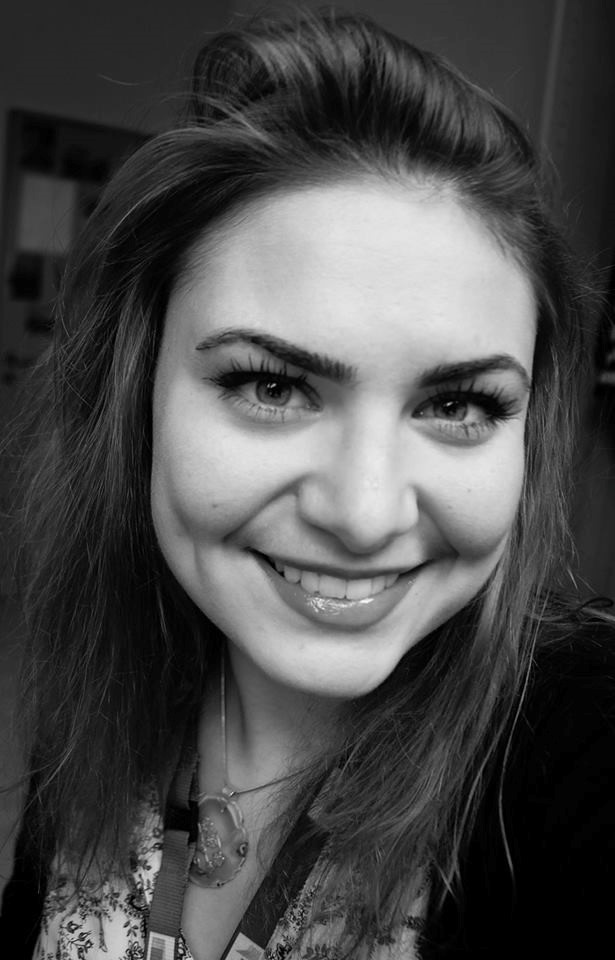


.jpg)
